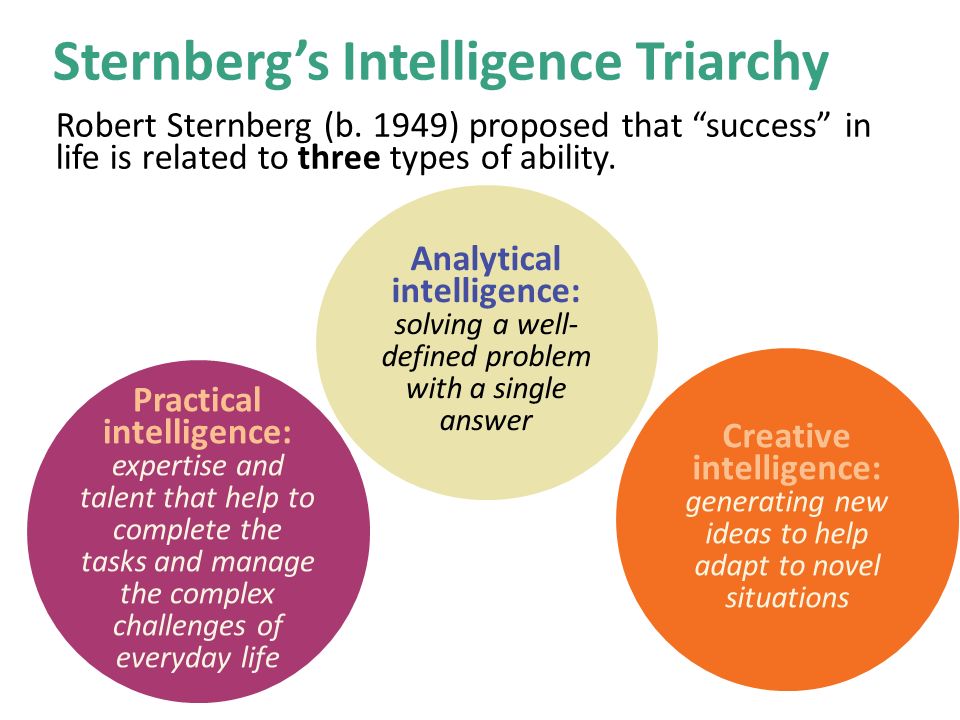Tri-Mind - Notes
Tri-mind is based on the work of Robert Sternberg (1985, 1988, 1997), who proposes three "intelligences," or modes of processing, that all functional human beings possess and use in daily life, while also suggesting that many people will have preferences for or strengths in or or two of the intelligences rather than in all three.

The three intelligences are:
- Analytical: "schoolhouse intelligence," characterized by part-to-whole, linear, and sequential ways of learning.
- Practical: real-world application learning, characterized by use of knowledge in authentic contexts.
- Creative: characterized by imaginative problem solving, innovation, and thinking outside the box in useful ways.
Allowing students to learn and express learning in preferred areas increases achievement.
Using tri-mind in the classroom typically begins with delineating which learning goals the activity should help students master. The teacher then develops an analytical task, a practical task, and a creative task (or options for each category) that will result in students achieving the goals regardless of task choice.
Tri-mind is especially well suited for differentiation in response to students' learning profiles, but Tri-mind activities also can be adjusted to address students' readiness- and interest-based needs.